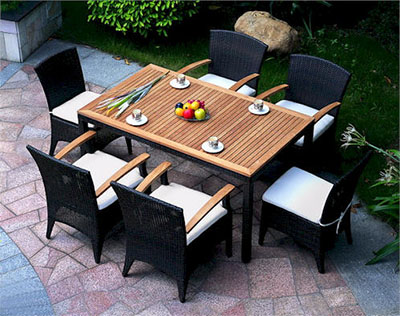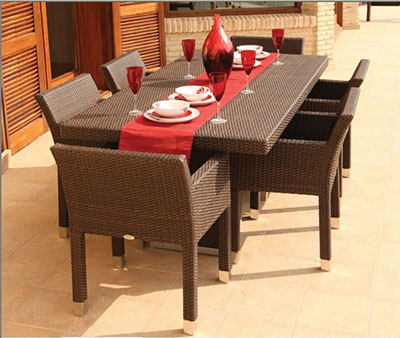Mr. Miles Southworth, a professor at the Rochester Institute of Technology, once pointed out in his article "Quality Control Scanner" that the choice of color control bar is the most critical element in quality control . It should contain at least solid color patches, overprinted color patches, and gray-balanced color patches; it has nothing to do with whether the color scale is micro-line or half-tone screening. "
Some printing fields have special requirements for color labels. For example, in the Recommended Specifications Web Offset Publications (SWOP), the sample should contain the following objects:
Single-color ink, two-color overprint and three-color overprint solid color patch.
The 25%, 50% and 75% chromaticity values ​​of each printing ink are color blocks screened with 133 lines per inch.
Some color patches that are visually sensitive to ghosting and dot expansion are helpful for operator observation.
The gray balance color bar is composed of three inks and color blocks with different black color values ​​placed side by side, and the color value of these three color blocks should be matched with the black block when viewed under the lighting condition of 5000 degrees Kelvin temperature.
A control element used to estimate whether the exposure of the printing plate is correct.
Other printing fields also have different needs.
Suggest
To understand and control the tone reproduction of print jobs (or jobs copied from pre-proofing systems, color printers, or copiers), it is necessary to measure at least five parameters of the output of the imaging system, which are:
The density of the printing material is 25%, the apparent dot expansion at the color block or the density value is 50%, the apparent dot expansion at the color block is 75%, and the printing contrast solid ink density (SID) in the dot area
In addition, additional objective objects and visual objects need to be selected to help operators and managers quickly determine the balance of network expansion and determine whether the copying problem is a problem in the copying process or in the plate-making operation.
In order to help people in the industry to communicate with the color scale, it is recommended that the selected color scale include at least the following elements:
1. 25% chromaticity blocks of yellow, magenta, cyan, and black inks. These color blocks help to measure and understand the reproduction of quarter-tone areas in the image. There is no agreement in the industry to use 25% color blocks as a reference. Some people support the use of 25% color blocks, while others believe that the total dot expansion value of inks of this color is preferred. If the dot expansion value is used as the measured characteristic parameter, the 25% color patch should be placed near or next to the solid patch of the same color ink, because the solid density value is needed when calculating the dot expansion.
2. 50% chromaticity blocks of yellow, magenta, cyan, and black inks. These color blocks are helpful for measuring and understanding the reproduction of midtone regions in the tone curve. The reproduction of important colors and details of any printed image is done through halftone dots, so the reproduction of midtones is very important. Since the calculation of the dot expansion requires a solid density value, the 50% chroma block should also be placed close to or next to the solid block of the same color ink.
3. 75% chroma blocks of yellow, magenta, cyan, and black inks. These color blocks help to measure and understand the duplication of dark areas of the tone curve. The three-quarter tones are measured simultaneously with a solid patch to determine the print contrast of the image. High printing contrast means that the ink density on the ground is higher, while the 75% tone zone has clear levels and is not affected by the ink supply system or other factors. As with the 25% and 50% color patch objects, the calculation of the print contrast also requires solid density values, so the 75% chromaticity patch should also be placed near or next to the solid patch of the same color ink.
4. Solid color patches of yellow, magenta, cyan, and black inks. These color patches are helpful for measuring and understanding the ink supply of these four colors. The function of changing the amount of ink is one of the on-machine operations that the printing press operator needs to perform, so it is very important for the operator to measure and determine how high the ink density is through some control objects. At the same time, you can also use a density meter to objectively measure the chromaticity values ​​of cyan, magenta, and yellow inks to correct grayscale and chromaticity values.
5. Two-color superimposed color patches are used to determine the overprinting of the second color ink imprinted on the surface of the first color ink. Chromatic printing affects the effect of overprinting, such as green grass (mainly reproduced by overprinting yellow ink on cyan ink) and red tomatoes (mainly reproduced by overprinting yellow ink on magenta ink). The two-color overprinting color block can be used to correct the color separation data and understand the specific effect after overprinting in advance. If overprinting does not occur as expected, the color of the overprint will change, and the grass and tomatoes in the above example will be bluer than the desired color. If the printing order of the above inks is changed, the situation will be different, because the ink supply order will also affect overprinting.
Two-color overprinted data can be used to objectively measure the chromaticity values ​​of green, red, and blue inks with a densitometer, and to measure and correct gradation of grayscale. Two-color overprinted objects should be compared with the solid patches of the two colors used.
6. Gray-balanced color patches contain at least midtones, preferably one-quarter and three-quarter tone patches. The human eye is more sensitive to the color transition in the neutral gray area. A mid-tone block printed with black ink and a mid-tone block composed of cyan, magenta, and yellow colors are placed side by side for quick visual detection Out of the three colors, there is a slight change in dot expansion and gray balance. When a significant change occurs, the operator can take a more accurate measurement method to measure the monochromatic color patch and the solid color patch to find out the cause of the imbalance in the dot expansion.
7. The visual color blocks of cyan, magenta, yellow, and black allow visual evaluation of the printed paper to check whether the exposure of the printing plate is appropriate. Plate exposure will shrink the dots or expand the dots, which will affect the copying of the film on the printing press. Since 25%, 50%, and 75% of the printed patches are affected by the exposure of the printing plate and printing conditions, it is difficult to determine what caused the harmful changes in the printing operation. The visual printing plate elements help to analyze the source of this uncertainty.
8. Position the mark to ensure that all elements copied and printed are fully registered.
Color scale element size
Although the size of the element will have a slight influence on the measurement, the size of the color scale element is not particularly specified, as long as the size of the color block can be measured with existing equipment. The form of objects contained in the color scale is more important than the size of these objects.
Color code placement
Whenever possible, place the color mark across the entire top, center, or bottom of the roll or sheet. The color mark should have a certain width, so as to understand the printing and copying characteristics of the entire paper. This is very important because the color target to be measured should be placed side by side with the full color image to be monitored.
Number of screens
Although the number of screens will have a slight impact on the measurement, it does not specify a specific value. Users should follow the specific parameters of the print market they are in (for example, the number of screen lines for SWOP specified color codes applied to published films and printing is 133 lines per inch), or the user needs to select the most suitable color code screen lines.
Dot shape
As with the number of screen lines, although the dot shape will slightly affect the measurement, it will not specify a specific dot shape. Users should also choose according to their special needs and habits.
Original film
All color-coded films should be original films. The copied or copied film, even if only once, will not contain the chromaticity value expected by the operator or manager when analyzing the printed object, resulting in poor information exchange.
With today's imaging technology, any company or company can make its own color-coded film. However, it is recommended that the following conditions must be met:
1) The film contains at least the elements listed above;
2) Strict quality control testing should be carried out to ensure the accuracy of the chromaticity value and other elements in the film;
3) The content and purpose of each color-coded element are clearly marked in the document, allowing operator training and communication with other staff in the printing production process.
Our Rectangle Patio Dining Set has a relaxed, southern attitude, intricately handwoven in UV resistant resin wicker. You'll enjoy alfresco meals more as you unwind in thickly cushioned dining chairs. The smoothly woven rectangular patio dining table comfortably hosts up to six guests.You can choose different size and color to decorate your dining and garden.
-Handwoven premium resin wicker
-UV-protected, antimicrobial
-Rust-resistant powdercoated frames
-Cushions included
-100% waterproof polyester fabrics
-All-weather cushions have a high-resiliency foam core wrapped in plush polyester
-Table-top with tempered glass
-Assembly required on table
-polyethylene rattan: it's non-toxic and safe for the environment. It's also antimicrobial, a quality that prohibits the growth of fungus and mildew. The wicker won't splinter or rot in extreme temperatures (-94°F to 176°F), making our furniture an excellent choice for almost any climate.


If you have any questions, please contact with us directly. Rectangle patio dining set are produced
by Golden Eagle Outdoor Furniture With High Quality and Good Appearance. Welcome you can visit our Factory. For any inquiry,Please send mail directly to us.
Welcome your inquiry for further discussion.
Rectangle Patio Dining Set,Rattan Rectangle Dining Set,Wicker Rectangle Dining Set,Outdoor Rectangle Dining Set
Golden Eagle Outdoor Furniture Co., LTD. , https://www.gegardensets.com